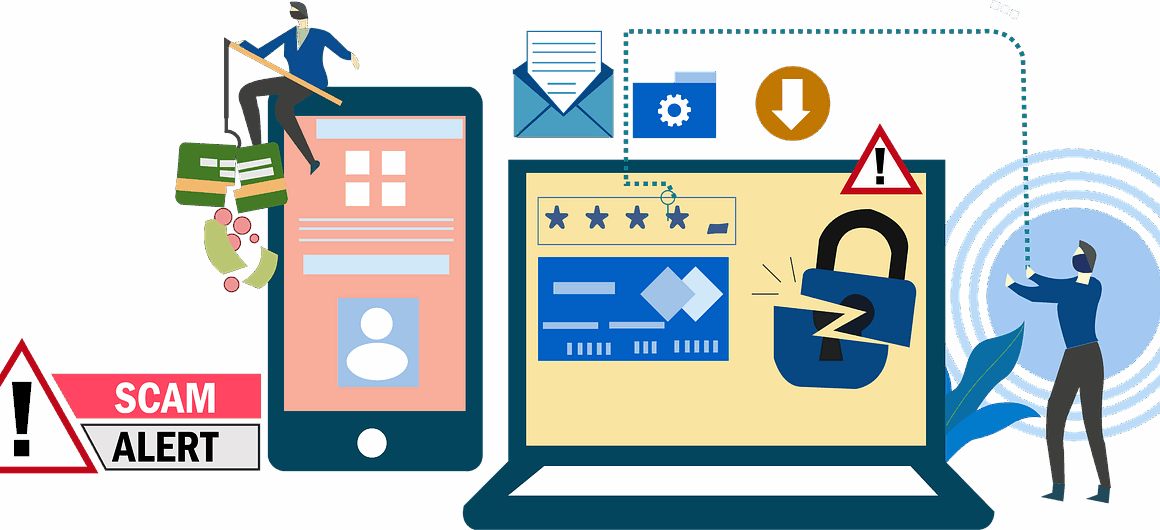Understanding Cybersecurity Risk in Modern Finance and Business
Cybersecurity risk management has emerged as a crucial element in today’s financial and business markets, with institutions facing an ever-increasing threat landscape. The digitization of operations and reliance on technology present organizations with opportunities and significant vulnerabilities. Cyber threats can lead to severe financial losses, reputation damage, and regulatory challenges. Consequently, businesses must adopt a proactive approach, developing comprehensive risk assessments that encompass a variety of potential threats. Key components of cybersecurity risk management include identifying assets, evaluating vulnerabilities, and determining appropriate mitigation strategies. In this evolving environment, businesses must recognize the importance of recovery plans and incident responses to minimize damages when incidents occur. This involves training staff, implementing robust security measures, and frequently updating systems to fend off new threats. Furthermore, organizations should promote a culture of cybersecurity awareness across their workforce. By fostering an environment where employees understand their role in protecting sensitive information, businesses can significantly reduce the likelihood of security breaches. Comprehensive cybersecurity strategies empower organizations to navigate risks effectively and secure their operations in this unpredictable and complex landscape of modern finance and business.
The Scope of Cybersecurity Risks
The scope of cybersecurity risks continues to evolve due to the rapid advancement of technology and increased adoption of digital solutions in finance and business. Cyber threats can come in various forms, including phishing attacks, malware, and other sophisticated tools employed by malicious actors. Businesses must acknowledge that they are not only at risk of financial theft but also of losing critical data and intellectual property. This evolving threat landscape requires a multi-faceted approach to safeguarding assets. Companies should conduct regular evaluations of their cybersecurity policies to ensure they are effectively addressing potential vulnerabilities. Additionally, organizations need to stay informed about emerging threats and adapt their strategies accordingly. Continuous training and awareness programs for employees are essential components of effective cybersecurity risk management. Regularly scheduled drills can prepare staff for actual incidents and reinforce the importance of adhering to security protocols. Importantly, collaboration with industry peers and regulators can enhance an organization’s understanding of common threats, allowing for better protection and shared learning. Ultimately, a well-rounded strategy that considers the diverse nature of cybersecurity risks is essential for safeguarding modern financial and business operations against potential attacks.
As cyber incidents grow more prevalent, regulatory frameworks surrounding cybersecurity in finance and business have tightened significantly. Governments worldwide recognize the need to bolster cybersecurity measures to protect economic stability and citizen trust. Consequently, organizations must understand and comply with relevant regulatory requirements affecting their operations. Companies face strict penalties if they fail to adhere to these regulations, including financial loss and reputational damage. Compliance involves implementing effective data protection strategies, maintaining secure records, and regularly reviewing security protocols. Insufficient processes can result in data privacy violations, which may incur hefty fines and legal repercussions. Keeping abreast of regulatory changes is vital for businesses as the compliance landscape can shift quickly. Furthermore, engaging legal experts may help in navigating complex regulations, offering valuable insight regarding obligations and requirements. To mitigate risks further, organizations should consider obtaining cybersecurity insurance, which can provide financial support during incidents and cover the costs associated with damage control and recovery. This insurance can be an essential aspect of risk management, equipping businesses with a safety net against potential financial losses resulting from cyber-attacks.
Building a Resilient Cybersecurity Framework
To adequately address cybersecurity risks, businesses need to adopt a resilient framework that encompasses preventive, detective, and responsive measures. An effective cybersecurity strategy involves layered defenses that can thwart attacks while minimizing damage. Key methods include firewalls, intrusion detection systems, and continuous monitoring to identify potential threats swiftly. Using strong network segmentation can limit damage in case of a breach, providing containment and reducing attackers’ access to critical infrastructure. Regular audits and assessments also remain fundamental in identifying vulnerabilities and areas needing improvement within the cybersecurity posture. Additionally, adopting a risk-based approach allows businesses to prioritize responses based on the potential impact and likelihood of threats. Critical components of a resilient framework involve not just technological solutions but also organizational culture and employee engagement. Leadership commitment to cybersecurity initiatives ensures proper resource allocation, fostering an environment where everyone understands their role in maintaining security. Employees must be trained regularly on emerging threats, with simulated phishing exercises enhancing their awareness. This integrated approach empowers organizations to create a fortified security environment, proactive and capable of effectively mitigating risks over time.
In today’s interconnected world, third-party vendors pose significant cybersecurity risks, making it essential for organizations to assess their supply chain comprehensively. Cyber incidents can occur through weak links, making diligent vendor assessments a priority during the selection process. Establishing strong security requirements for third-party partners creates a collective defense that strengthens overall cybersecurity posture. This requires a thorough evaluation of vendors’ cybersecurity practices, including compliance with regulatory standards and security certifications. Regular reviews, audits, and assessments of third parties are paramount for identifying potential vulnerabilities in the vendor network. Additionally, businesses should ensure that contracts with vendors include stipulations for accountability regarding data breaches and security events. By incorporating cybersecurity clauses, organizations can set clear expectations and obligations that mitigate risks. Creating a collaborative culture among vendors encourages open communication about security incidents, which can lead to quicker identification and responses to threats. An organization’s resilience greatly depends on its third-party management processes: thus, continuous investment in these assessments reinforces risk mitigation strategies, helping businesses maintain secure operations and protect sensitive information from emerging threats.
The Importance of Incident Response Planning
Having a robust incident response plan is a critical aspect of an organization’s cybersecurity strategy. Operationalizing protocols for timely responses can significantly reduce the impact of security incidents. A well-developed incident response plan should outline clear roles and responsibilities while establishing communication channels for stakeholders during a cyber crisis. Quick reporting procedures are paramount to ensuring that incidents are addressed without delay. Conducting tabletop exercises allows teams to practice and refine their response capabilities, staying ready to navigate real-life scenarios. Regular updates to these plans are crucial since the threat landscape changes continuously; thus, businesses need to remain agile and adaptable. Following an incident, organizations should conduct thorough post-incident evaluations to gain insights into the factors that contributed to the breach. This reflection phase helps organizations learn and improve their practices based on firsthand experiences. Additionally, data gleaned from incident response practices can inform future cybersecurity strategies, building a more resilient security framework. Ultimately, prioritizing incident response planning ensures organizations are prepared to tackle cybersecurity threats effectively, safeguarding both their operations and reputation in the marketplace.
Moving towards productivity and collaboration in business environments does not exempt organizations from the intricacies of cybersecurity risks. Remote work, cloud solutions, and mobile devices have transformed workplace dynamics, leading to new challenges and vulnerabilities. Employees working from diverse locations creating potential security gaps necessitate enhanced vigilance. Organizations must regularly evaluate the security configurations of remote systems, ensuring compliance with established cybersecurity protocols. Comprehensive employee training tailored to remote work scenarios reinforces the importance of safeguarding sensitive information, especially when utilizing personal devices. Additionally, businesses can implement virtual private networks (VPNs) to secure connections and protect data transfers across unsecured networks. By adopting security policies specific to remote work, organizations can effectively mitigate risks associated with the digital landscape. Furthermore, fostering an open culture of security, where employees feel empowered to report vulnerabilities or seek assistance, can significantly decrease the likelihood of incidents. Moreover, introducing a secure communication platform enhances collaboration without exposing sensitive information. As the modern business landscape continues to evolve, organizations’ adaptability alongside robust cybersecurity measures will be critical in effectively managing risks and protecting valuable assets.
Conclusion: The Path Forward in Cybersecurity Risk Management
In conclusion, managing cybersecurity risks in the finance and business sectors requires a multifaceted and strategic approach. By recognizing the evolving threat landscape, organizations can thoroughly assess their vulnerabilities and implement effective security measures. Adopting a culture of cybersecurity awareness, engaging third-party vendors in security assessments, and preparing comprehensive incident response plans all play a pivotal role in building resilience against cyber threats. Furthermore, continuous training and adaptation to new technological advancements are essential for staying one step ahead of malicious actors. Collaboration within industries and active participation in knowledge-sharing forums can enhance the collective defense strategies across businesses, contributing to a stronger security posture overall. As cybersecurity threats become increasingly sophisticated, prioritizing investment in security technologies and workforce education will prove vital for organizations. It is through ongoing commitment and vigilance that businesses can successfully navigate the complexities of cybersecurity risks. Establishing a proactive cybersecurity strategy can positively influence an organization’s growth trajectory, promoting both secure operations and a competitive edge in the market. Future success in finance and business relies heavily on the continuous evolution of cybersecurity risk management practices and frameworks.


